Peru Travel Guide
Peru, the land of the Incas, awaits you with a world of adventure and excitement.
The perfectly fitted stones of this glorious empire continue to be the main attraction to people from all over the world. Machu Picchu, the lost city of the Incas discovered centuries after the last Conquistador left, remains a web of riddles for the adventurer and the scientist to tackle. The Nazca lines, what were they, UFO landing sites, or a pathway to the heavens and the gods?
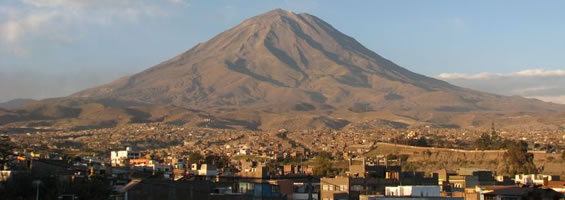
You do not need to be a history buff to enjoy Peru. Of late, thousands of people have dared visit the still-as-yet-unknown Amazon Rainforest (selva) in search of cures for the world’s illnesses by tapping into the knowledge of Shamans (medicine men) who may hold the secret to help us defeat the incurable.
Peru is often tourists’ first choice for holidays to South America. A vacation to Peru is generally a cultural holiday, based around visits to Inca ruins, though there are also ancient towns, jungle lodges, beautiful lakes, and dramatic scenery in which to explore.
Peru is a highland country – travelers often overlook the importance of acclimatizing to the altitude. If you want a highlight of Peru vacation, it’s best to visit the travel destinations in the following order so as to best acclimatize, and save the real highlight, Machu Picchu, for the end of your trip:
Explore Peru
You can have a reasonably comfortable trip to the depths of the jungle in Iquitos, starting at the seaside, crossing the Andes, and slowly making your way down. As Iquitos isn’t reachable by road, the last two days will be spent on an Amazon Cruise boat. But if you want to get to Selva quickly, just fly one of the modern airlines that serve Iquitos and Tarapoto with daily flights from Lima. Despite being visited by almost 1.5 million foreigners each year, you can always find a place off the beaten track, where you will be the main attraction for the locals.
 On the way to the low jungle in the Amazon Basin, some tourists will find that a high jungle plateau is a good place for them. Especially since it can tend to have a slightly lower humidity level than the low jungle areas. Tarapoto is the most important city in the area, and it is the trade center for the District of San Martin. Tourists aren’t crowded into Tarapoto and surrounding cities as might be found in some other locales in Peru, but they are generally treated very well by the locals who welcome their business.
On the way to the low jungle in the Amazon Basin, some tourists will find that a high jungle plateau is a good place for them. Especially since it can tend to have a slightly lower humidity level than the low jungle areas. Tarapoto is the most important city in the area, and it is the trade center for the District of San Martin. Tourists aren’t crowded into Tarapoto and surrounding cities as might be found in some other locales in Peru, but they are generally treated very well by the locals who welcome their business.
You may not be the adventurous type but relax. Peru is working hard at becoming a modern country equipping itself to face the challenges of the new millennium. The five-star hotels, the restaurants, and the nightlife will dazzle you. So come and explore this exciting land, rich in history and culture.
Climate
Peru experiences two very distinct seasons, wet and dry, (summer and winter) Peru’s high season for travel coincides with the driest months: May through October, with by far the greatest number of visitors in July and August. May and September are particularly fine months to visit much of the country. Airlines and hotels also consider the holiday period mid-December through mid-January as the peak season.
Popular Cities
The capital of Peru is Lima. The principal cities in Peru are Lima, Arequipa, Trujillo, Chiclayo, Iquitos, Huancayo, Piura, Chimbote, Cusco, Pucallpa, Tacna, Ica, Juliaca, Sullana, Chincha Alta, Huanuco, Ayacuchu, Cajamarca, Tarapoto, Talara, Tumbes.
Amazon Jungle Lodges
There are also jungle lodges in the Amazon region around Iquitos which is in Northern Peru, though it takes longer to get to Iquitos from Cuzco (you would need to overnight in the capital city Lima). Lima itself has little to offer tourists apart from its old colonial center as well as some fine restaurants and nightlife. Two of the best hotels in Lima are Miraflores Park and the Country Club Hotel.
Best of Peru
Iquitos
Iquitos is an ideal place for lovers of ecotourism and those who want to feel intimate contact with the virgin nature of the Amazonian forests; from the city, the jungle will be able to go into the heat of shelters, and most adventurous and dared the parks and reserves natural, full and full of flora exuberance and fauna can arrive until, with many places still to discover, and many living species not known by science. She is one of the zones of greater biodiversity in the world.
Machu Picchu
Wonderful Inka City is a full place of mysticism, a monument to divinity, in which the man really feels like a creature of the Gods, The overwhelming look of its spirit, seems to transport it to a magical place where anything is possible, in an unimaginable way. It’s one of the more famous archaeological centers of the world, and therefore, attractive to tourists who visit more of Peru.
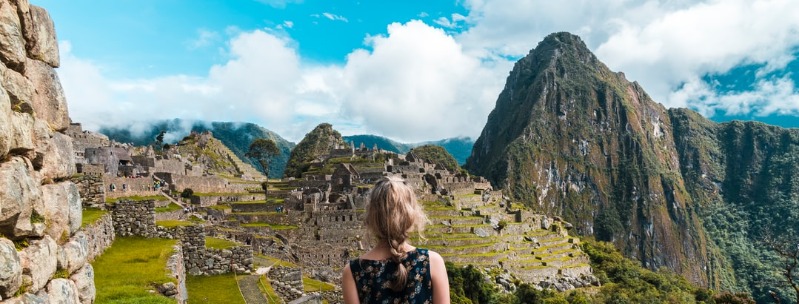
Nazca
Famous for the ancient geometric and animal designs etched into the surrounding desert plateau, Nazca is the gateway to many more mysterious pre-Inca sites and ceremonial centers.
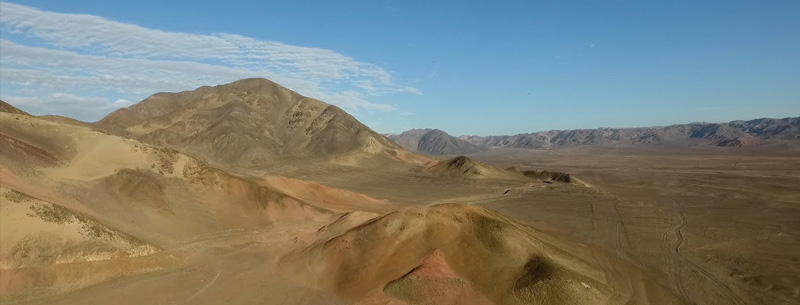
Máncora Beach
Peru’s most popular surfing haven, Máncora is a groovy stopover when traveling on the north coast – equipment can be hired locally.
Inca Trail
The Inca Trail is just one of innumerable footpaths that snake across the Peruvian Andes, but its climactic endpoint – the spectacular ruins of Machu Picchu – draws trekkers from around the world.
Huacachina
The legendary lagoon at Huacachina is a quiet, secluded spot with salty waters and mud that have been used for healing over many centuries.
Lake Titicaca
Another of Peru’s highlights is Lake Titicaca, the highest navigable lake in the world. Consider traveling by train from Cuzco to Puno, which is next to Lake Titicaca. Our advice would be to book a hotel not in the town of Puno itself, which is rather unattractive but to book a lakeside hotel out of town such as the Libertador or the Casa Andina Private Collection hotel. From Puno, one can travel through the dramatic landscapes of the Colca Canyon (where the Colca Lodge is the best hotel) to the pretty colonial town of Arequipa.
Around 13,700ft above sea level, Taquile is an ancient jewel in the waters of Lake Titicaca – the local Indians speak in whispers, and, apart from a few solar electric panels, there’s only llama power.
Colca Canyon
Traveling overland from Arequipa to Lake Titicaca through the Colca Canyon can be comfortably done in a couple of nights. Basing your Peru travel itinerary as such allows you to slowly acclimatize to the heights of the highlands.
The Wonderful canyon in the world at over 1km from cliff edge to river bottom, Colca boasts some of Peru’s finest Andean scenery and is the most reliable place for wild condor spotting.
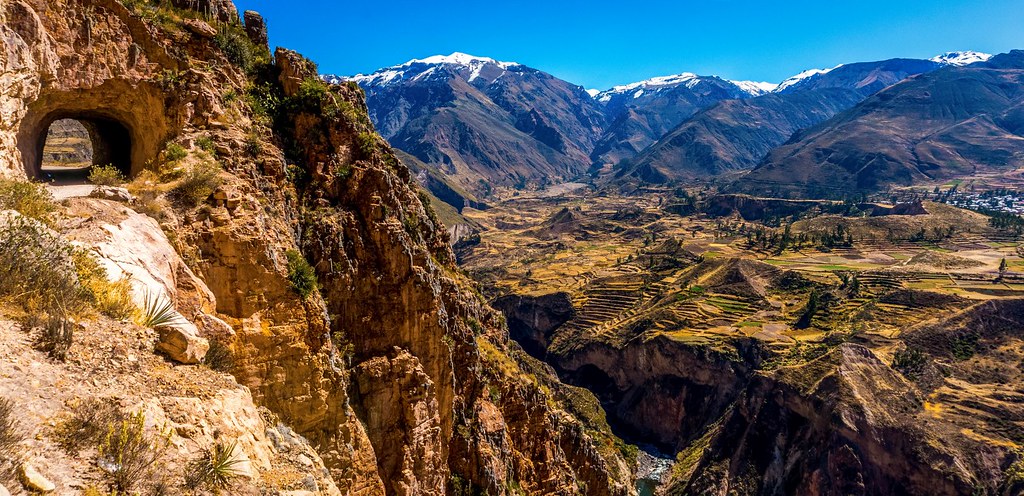
The deepest canyon in the world, the Colca Canyon offers some of Peru’s most spectacular Andean scenery. There are numerous small and picturesque Andean villages in the Canyon, as well as some fantastic trekking opportunities. One of the most popular activities is to visit the Cruz del Condor, to see the majestic Condor bird at close quarters (May to December is the best time to see these monstrously huge birds). There are also hot springs in the Colca Canyon, but the principal travel attraction is the outstanding mountainous scenery.
As for luxury hotels in the Colca Canyon, the remote Colca Lodge is the best option. It may well be fully booked (it often is) – the best alternatives include the Estancia Pozo del Cielo or the Casa Andina Hotel (both in the town of Chivay), or the Orient Express owned Parador del Colca.
It’s possible to visit the Colca Canyon as either a day tour or an overnight package from Arequipa, but there’s the little point – you might as well travel all the way through the canyon to Lake Titicaca.
Inca Trail
The Inca Trail is a legendary “Rite of Passage” for many and is South America’s most famous trek. It’s by far the most impressive and challenging way to travel to Machu Picchu, Peru’s most spectacular Inca ruins. The trek normally takes three nights, though there is an alternative “Mini Inca Trail” for those that just want one night of camping. The Inca Trail trek usually starts from km 88, which is just West of Ollantaytambo, though many tour operators choose to begin the trek at km 82, which is at Pisacucho. The hike is so highly memorable due to a wonderful mix of amazing mountain views and Inca ruins. The dawn views of Machu Picchu on your final day are quite spectacular – aim to arrive as early as possible to avoid the tourist hordes that descend during the day.
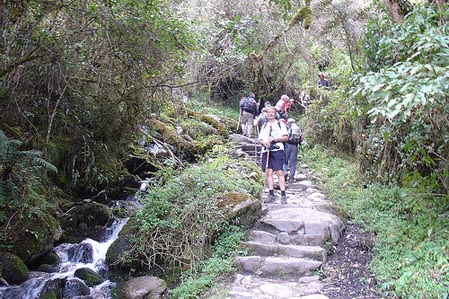
Practical Inca Trail Advice
The Classic Inca Trail trek can be arranged by numerous Cuzco tour operators and generally costs about $300 per person. You will be camping in designated campsites each night, porters will be able to help you with baggage but cannot legally be overwhelmed and you can buy any equipment you lack (or is not provided – depends on the tour operator with whom you book) in Cuzco.
It’s absolutely crucial that you allow time to acclimatize to the altitude in Cuzco before your attempt at the Inca Trail. Two nights in Cuzco or the Sacred Valley is the absolute minimum, though three is highly preferable. Do not attempt the trek after just spending one night in Cuzco – you will almost have an extremely painful time on the trek and the travel highlight of your vacation to Peru will be ruined. Altitude sickness is not discriminatory – your physical fitness and age have no bearing on how you might be affected.
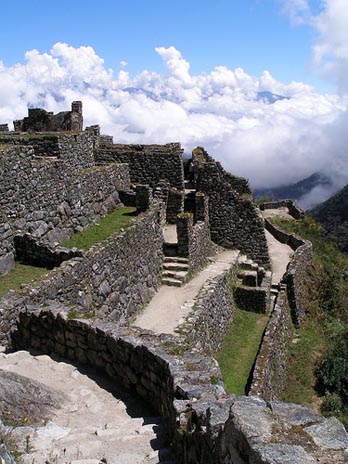
Check Inca Trail Availability
The Inca Trail gets booked up well in advance – do not expect to be able to turn up in Cuzco and book a last-minute package – your chances are nil. Strict rules mean that there are now just 500 tourist departures a day, and you will have to book in advance. Almost all Peru tour operators can arrange the Inca Trail for you.
You can check the availability of the Inca Trail by clicking here. You’ll notice that the trek gets booked up well in advance – you’ll typically need to book at least 6 weeks in advance, though during Peru’s peak tourism seasons, the trail can be fully booked as much as 3 months beforehand. Don’t rely on last-minute cancellations.

If the Inca Trail is fully booked when you want to travel, there are other wonderful alternatives such as the Santa Teresa Trek, Salkantay Trek, the Lago Ancascocha route, the Choquequirao Trail, and the Huchuy Qosqo to Urubamba Trek.
Lake Titicaca, Peru
Lake Titicaca is the highest navigable lake in the world and borders Bolivia in addition to Peru. It’s a beautiful lake on which to take tours amidst dramatic landscapes and experience the Andean culture. Lake Titicaca is one of the highlights of vacations to Peru (and Bolivia) and combines well with a visit to Machu Picchu and Cuzco, where one can travel by train (from Puno).
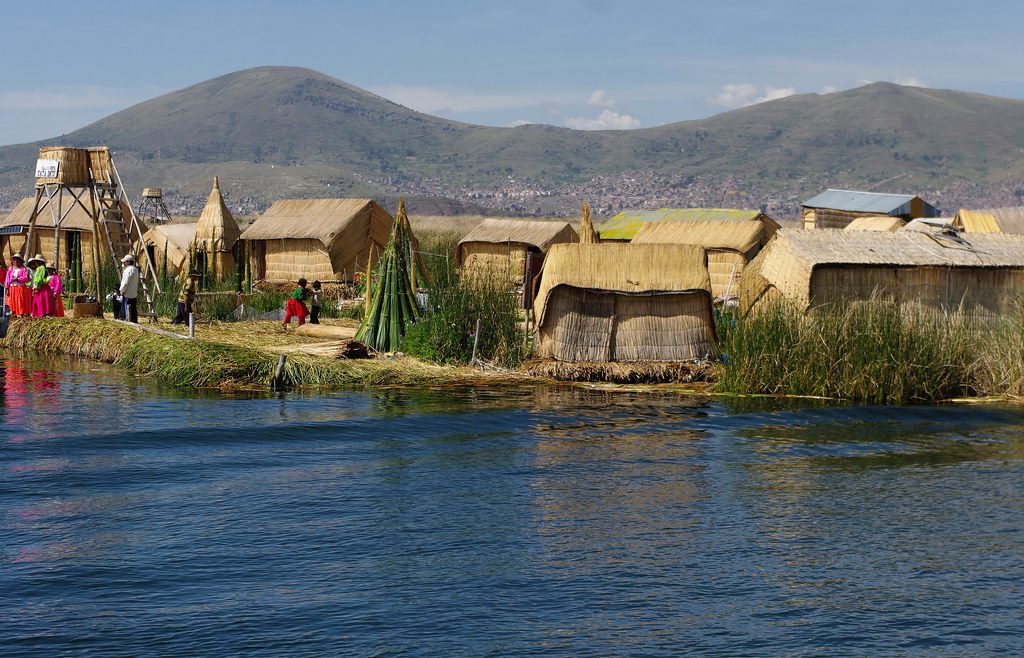
To travel to Lake Titicaca, one can either 1. travel overland via Arequipa and the Colca Canyon; 2. travel by train or bus from Cuzco; 3. Travel overland from La Paz, Bolivia or; 4. catch a flight to the nearest airport at Juliaca, some 40 minutes from the lake itself. The main city on Lake Titicaca is Puno, which is not particularly attractive – we would advise that you book a hotel just outside of Puno on the lakeshore itself.
Lake Titicaca Hotels
- Libertador Hotel – The Libertador is probably the best hotel on Lake Titicaca, with 110 rooms and a fantastic position overlooking the lake. Horse-riding tours can also be organized.
- Casa Andina Private Collection Hotel – This relatively new hotel offers comfortable accommodations emphasizing Peruvian culture and traditions. The hotel is a 15-minute drive outside Puno along the lake and beside the railway line. The Casa Andina Private collection has 45 rooms.
- Posada Del Inca Hotel – With 60 rooms, the Posada del Inca Hotel is located on the shores of Lake Titicaca, five kilometers from the center of Puno.
- Eco Inn – with 40 rooms, The Eco Inn hotel is more of a budget hotel but set in a peaceful and scenic setting, five kilometers from the center of Puno on the shores of the lake.
- Taypikala Hotel – another good hotel on the shores of Peru’s Lake Titicaca.
Peru Tours & Excursions
Uros & Taquile Islands Tours
A 3-hour boat trip from Puno is the remote and tranquil island of Taquile with its amazing views of Lake Titicaca. 1500 Quechua-speaking Indians continue to live in this remote community and many still use traditional Incan clothes. From here, continue on to the floating Uros Islands, constructed from layers of reeds by the Uros Indians over many centuries.
Sun & Moon Islands Tours
Moon Island is dotted with ancient ruins and tiny villages and is blessed with truly spectacular views and a wealth of Inca history. Here you’ll have a chance to visit the Iñak Uyu Sun Virgins temple, considered to be one of the most important ruins on the lake. Sun Island is, according to legend, the birthplace of the Sun Empire. There is a large temple, fortress, and the Inca water springs, which are supposed to be a source of eternal youth. Travelers might consider traveling on to Bolivia from here rather than returning to Puno in Peru.
Sillustani Ruins Tours
The ancient burial ground of Sillustani is 30 km from Puno (next to Lake Titicaca). The ancient site lies on top of a small hill overlooking Lake Uyamo and is most notable for its ‘chullpas’ (funerary towers).
Beach vacations in Peru
There aren’t really any amazing beaches in Peru, though you might consider heading to Mancora. Equally, there is nowhere easily accessible to use as a beach add-on for your Peru vacation. It is a flight of many hours to anywhere with a decent beach, but you might want to consider the Galapagos Islands, Rio de Janeiro in Brazil, or flying to the Caribbean.
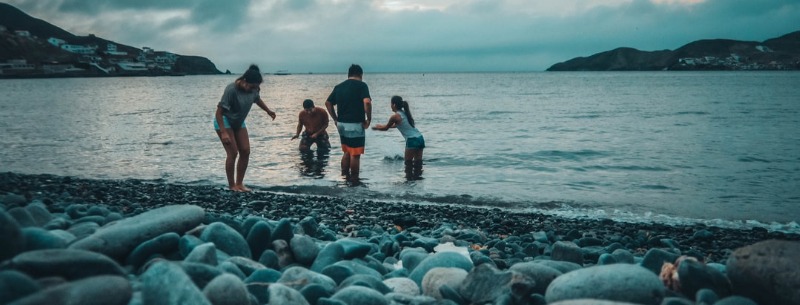
Peru’s very long Pacific Coast (over 2500km long) doesn’t boast any genuinely spectacular beaches, but nonetheless, there are plenty of pretty decent options. If you come with low expectations, you’ll probably be pleasantly surprised by Peru’s beaches. Most vacations to Peru are pretty active trips, but nonetheless, there are a handful of good places to relax on the beach after more adventurous activities in the highlands. Peru’s best beaches are found to the North – you should catch a domestic flight to Tumbes, and travel South to beach resorts such as Mancora and Punta Sal. The tourist high season from December to March can be very busy, especially at weekends.
We’ll mention Peru’s best beach resorts in order as one travels South from Tumbes, which is close to the border with Ecuador.
Zorritos
The first beach resort found South of Tumbes can be a little busy with local people but has a fine sandy beach and good surf. There are plenty of decent hotels and fine seafood restaurants in town.
Punta Sal
Punta Sal is a more upmarket resort than its neighbor Mancora (see below), which is 20km to the South. Playa Punta Sal is a beautiful 3km long sandy beach that is considered to be one of Peru’s best beaches. In the low season, it can be very quiet and relaxing here. There are various upmarket hotels to choose from.
Mancora
Mancora is a small, attractive resort town popular with surfers, backpackers, traveling to/from Ecuador’s nearby border, and young Peruvians from the capital Lima. There is a long, sandy beach in the town (good for swimming and surfing alike), plus other lovely sandy beaches to the South of town. There are plenty of restaurants, bars, nightclubs, and hotels in Mancora here – it’s quite a happening place. December to Easter Week is the high season and can get very busy with mainly Peruvian and Ecuadorean tourists.
Cabo Blanco
Travel a little South of Mancora to find Cabo Blanco, a place particularly popular with surfers and big game fishermen. The surfing here is almost legendary, as is the big game fishing. The beach is pretty fine too.
Colan Beach
West of Piura, this small but pleasant beach resort has a fine sandy beach and calm waters for swimming.
Huanchaco & Puerto Chicama
Just North of Trujillo (Lima’s second-largest city – a pleasant place with a colonial center and nearby archaeological sites) lies Huanchaco. Huanchaco is a surfing and fishing village with plenty of hotels and restaurants to choose from. The village is well known for its pointed fishing reed rafts, which ride the surf (trips on these can be arranged locally). About 50km further North, Puerto Chicama is well known as Peru’s best surfing beach – there are several surfer-type places to stay here.
Beaches in and near Lima
The beaches in and near Lima are often crowded and unclean, and you’ll have to keep a sharp eye on your belongings. January to March are especially busy months. El Silencio, Caballeros, Punta Hermosa, Punta Negra, Punta Rocas, Santa Maria, and Pucusana are a few beaches near Lima to choose from.
The Costa Verde refers to various pleasant beach suburbs of Lima which include Barranco, Miraflores, and San Isidro. Playa Redondo, Barranquito, and Los Pavos are amongst the best beaches in Lima.
Paracas National Reserve & Ballestas Islands
The Paracas Peninsula is a large area of coast to the south of Paracas village and is a marine reserve with the highest concentration of marine birds found anywhere in the world. Most tourists visit the peninsula as part of an organized tour, in part due to safety reasons, and also because it’s easy to become lost here. Trips to the Ballesteros islands can be arranged from the port in Paracas village. The Ballestas islands are very scenic and provide sanctuary to a huge number of birds as well as other marine wildlife such as sea lions, penguins, and dolphins. These islands are sometimes compared to the Galapagos Islands due to the great variety of wildlife found here.
The Nazca lines are relatively close by, as are the wine bodegas around Ica – both are interesting destinations for onward travel. Alternatively, head to the lake-side Huacachina, a place popular with travelers looking to relax, experience the lake’s curative green waters or go sandboarding on the nearby sand dunes.
